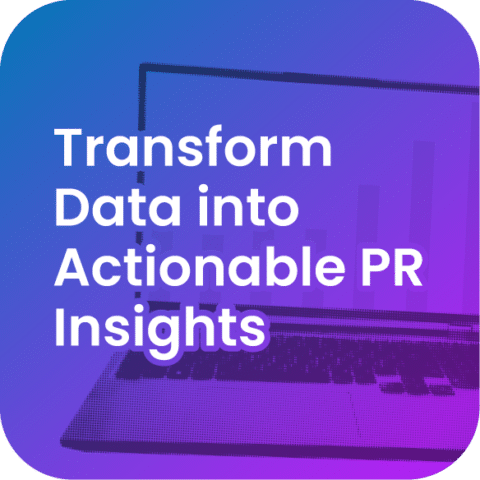Facebook and Instagram follow X and put more pressure on public relations teams
Recent shifts toward reduced content monitoring on major social platforms like Facebook, X, and Instagram are poised to impact not only the general public, but also the business-to-business (B2B) technology sector. This change will be particularly significant for internal communications teams and their external public relations partners. For PR leaders, both internal and on the agency side, this shift presents both challenges and opportunities that require thoughtful consideration and a strategic response in how (and where) they look to engage.
The shift to reduced content moderation has been in the works for some time due to two major factors:
- Political/consumer pressures as it relates to free speech and transparency. There are some who think that content should be free to post and share and the onus is on the viewer to interpret what it is or means to them.
- Cost. Content moderation is a timely and expensive endeavor. Let’s face it, the platforms that have reduced the restrictions are large, global economic beasts who are also trying to satisfy shareholders.
While B2B communications teams have leveraged these popular social platforms to both amplify their brand and its message, while supporting larger campaigns, much of their time is spent on more traditional media sites and events. But will this move by the social media giants ignite a larger trend across these traditional media sites as it relates to content moderation? And what happens when a brand’s news/content is shared by audiences across these social platforms?
For public relations professionals in the B2B technology space, this shift presents a new set of challenges that require proactive, agile strategies. Here are some of the most pressing implications:
1) Increased Risk of Brand Reputation Damage
The reduction in content moderation creates a scenario where harmful, misleading, or offensive content can slip through the cracks more easily. For B2B technology companies, this is a significant risk. Negative comments, disinformation, or customer complaints can spread rapidly, potentially harming brand reputation. For example, if a competitor spreads misleading information about a company’s product or service, the PR team might face a more difficult task in mitigating the fallout.
2) Diminished Control Over Brand Message
In a landscape with reduced content moderation, the ability to shape brand messaging becomes more difficult. User-generated content is a double-edged sword; while it can drive organic engagement and build brand credibility, it also opens the door to negative commentary, rumors, or misinformation that could tarnish the brand’s image. B2B technology PR leaders must recognize that content posted by third parties—whether employees, customers, or competitors—can now circulate with less scrutiny. A single ill-advised tweet, post, or comment can snowball, influencing public perception and potentially undermining years of brand-building efforts.
3) Misinformation and Fake News Risks
As content monitoring becomes less rigorous, the spread of misinformation, particularly in niche B2B sectors, becomes an increasing concern. For B2B tech companies, where the line between fact and fiction can sometimes be difficult to discern, ensuring that potential clients or partners are not misled is essential. False claims about a company’s products, services, or values could lead to lost business, damaged relationships, or costly legal battles. The challenge of combating misinformation is especially relevant in sectors like cybersecurity, AI, and data management, where the stakes are high, and public trust is paramount. When false information spreads unchecked, PR leaders may find themselves in a defensive posture, constantly reacting rather than proactively shaping the narrative.
These challenges also present several extremely important opportunities for B2B communications teams. Being able to reshape how you engage and educate your target audiences will be critical during the first half of this year as those brands that are able to have more control of where and when their brand is highlighted will be able to turn their attention to more thought-provoking, business-oriented programs that support an organization’s overall goals. Doing this will also provide an important competitive advantage vs. their competition.
Here are five-ways PR teams can go about reshaping their approach to have more control and understanding of how their brand is being shared and reported on.
1) Identify your targets
By knowing what outlets and influencers are the go-to’s for your audience, you can streamline where you put your efforts. The spray and pray approach is dead (and should never be resurfaced). Instead, a much more targeted, consistent effort will increase your return. Does this mean less quantitative coverage? Possibly. Does it mean more quality coverage? Absolutely.
2) Have a much tighter narrative
Organizations today need to evaluate what it is they want the public to know about them and this requires a constant review of the overall corporate narrative. Stay closer to the message you want to convey and be careful about branching out too far from your original talking points. This can lead to comments being taken out of context and give fuel for others to twist your words and change the intent of your commentary.
3) Increased focus on owned content
If you’re worried about how others are going to tell your story, or it being taken out of context, the best way to get your message across is to have a consistent stream of information shared from your own .com. The importance of owning your own message and news will only grow, so now is the time to gain momentum on your site and blog. Let these resources serve as a destination site for trusted content that your audiences can come to and learn from.
4) User-centric content strategy
Reduced content moderation also implies that users have more power in shaping the conversation. Instead of relying on traditional PR channels and corporate messaging, companies will need to include more organic and user-centric content strategies. Communities, forums, and influencers on social media will play a greater role in brand perception and awareness.
5) Increase monitoring
This shift offers PR teams the chance to tap into authentic, peer-driven conversations. However, it also means that PR professionals must be prepared to respond to feedback, both positive and negative, in ways that feel organic and transparent and with that means more monitoring. While reporting has been a mainstay for the PR industry, the evolving landscape requires a more meticulous approach—one that emphasizes agile responses, sentiment tracking, and in-depth analysis to stay ahead.
The media waves have been shifting for some time. The latest news out of Meta does not mean that traditional media is dead, it just means the media you go after must be a trusted source by you and your target audiences. Feel free to share how you’re going to shift your content and media relations strategies based on this latest announcement.





